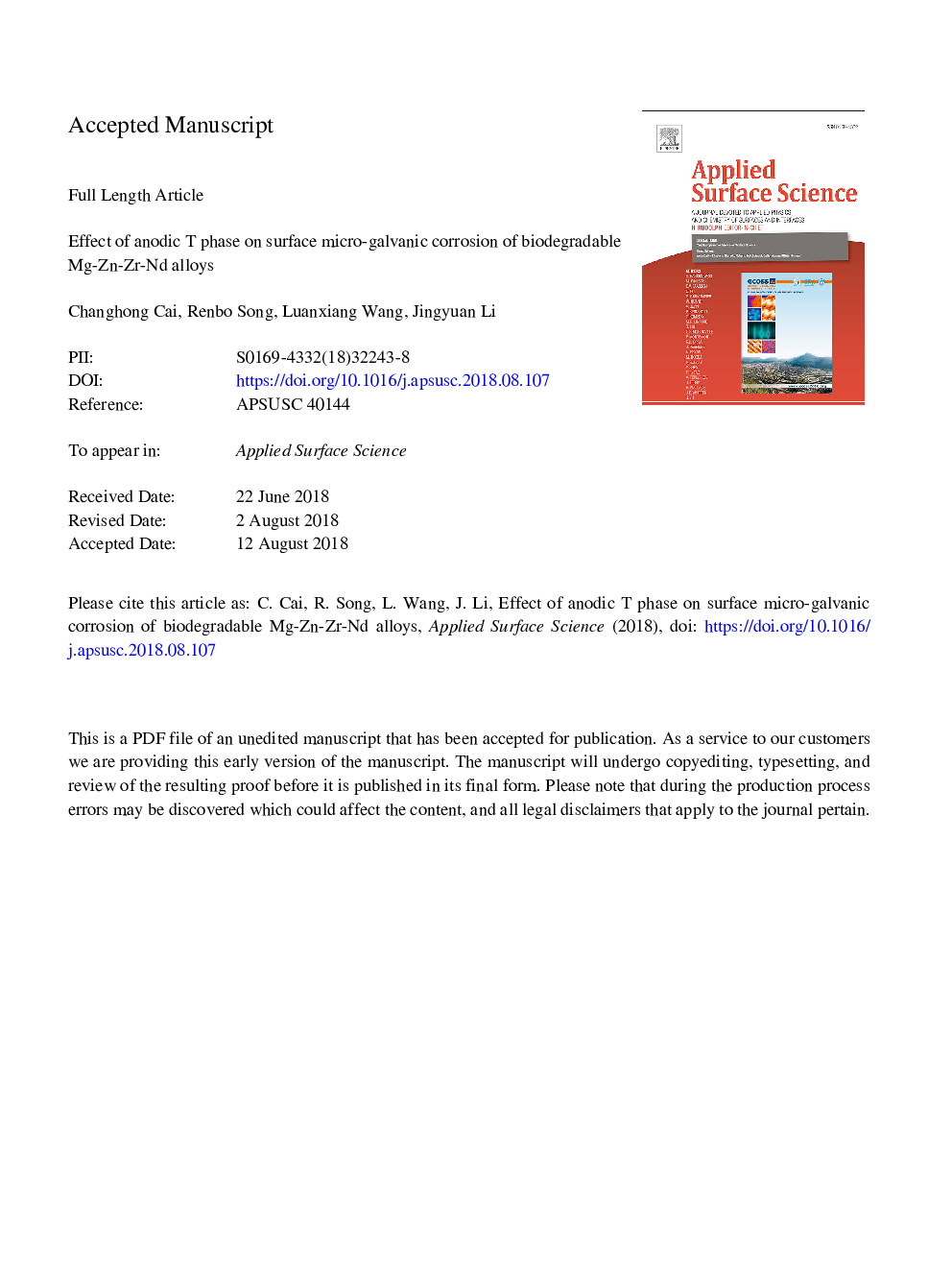| Article ID | Journal | Published Year | Pages | File Type |
|---|---|---|---|---|
| 7832742 | Applied Surface Science | 2018 | 35 Pages |
Abstract
A complete understanding of the role of Mg-Zn-Nd (T) phase in surface micro-galvanic corrosion of Mg alloys has not been fully developed. Therefore, the microstructure evolution and corrosion behavior in simulated body fluid (SBF) of Mg-2Zn-0.6Zr-xNd alloys (xâ¯=â¯0, 0.2, 0.6 and 1â¯wt%) were investigated. It was found that the MgZn phase in Mg-2Zn-0.6Zr alloy changed to Mg60Zn32Nd8 (T2) and Mg35Zn40Nd25 (T3) phases after adding 0.2-1â¯wt% Nd. With the formation of T phases, the grain size increased first and then decreased. By using scanning kelvin probe force microscopy (SKPFM), the Volta potentials of second phases relative to Mg matrix were measured. T2 and T3 phases with a relative Volta potential of about â400â¯mV acted as micro-anodes, so that they were corroded preferentially during the corrosion process. Because of the appropriate amount of anodic T phases and their discontinuous distribution, the alloy with 0.2â¯wt% Nd addition showed a uniform surface corrosion characteristic and exhibit the best corrosion resistance.
Related Topics
Physical Sciences and Engineering
Chemistry
Physical and Theoretical Chemistry
Authors
Changhong Cai, Renbo Song, Luanxiang Wang, Jingyuan Li,
